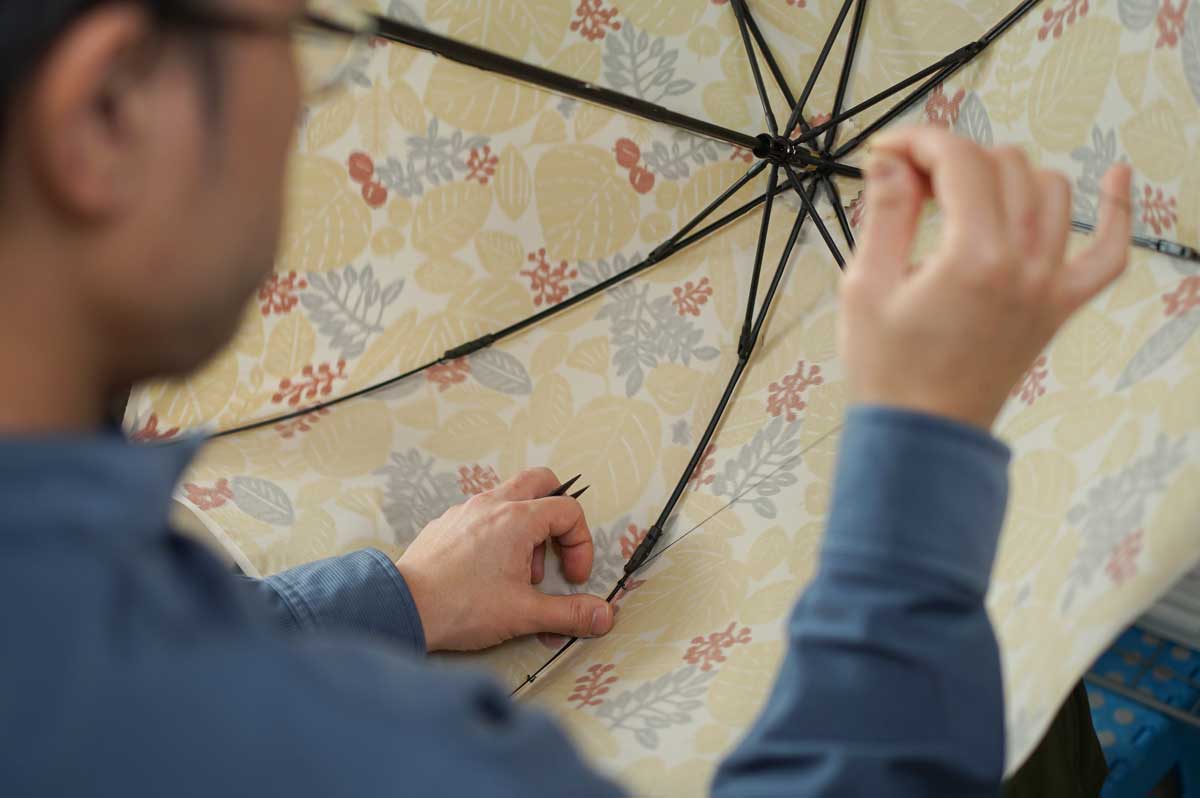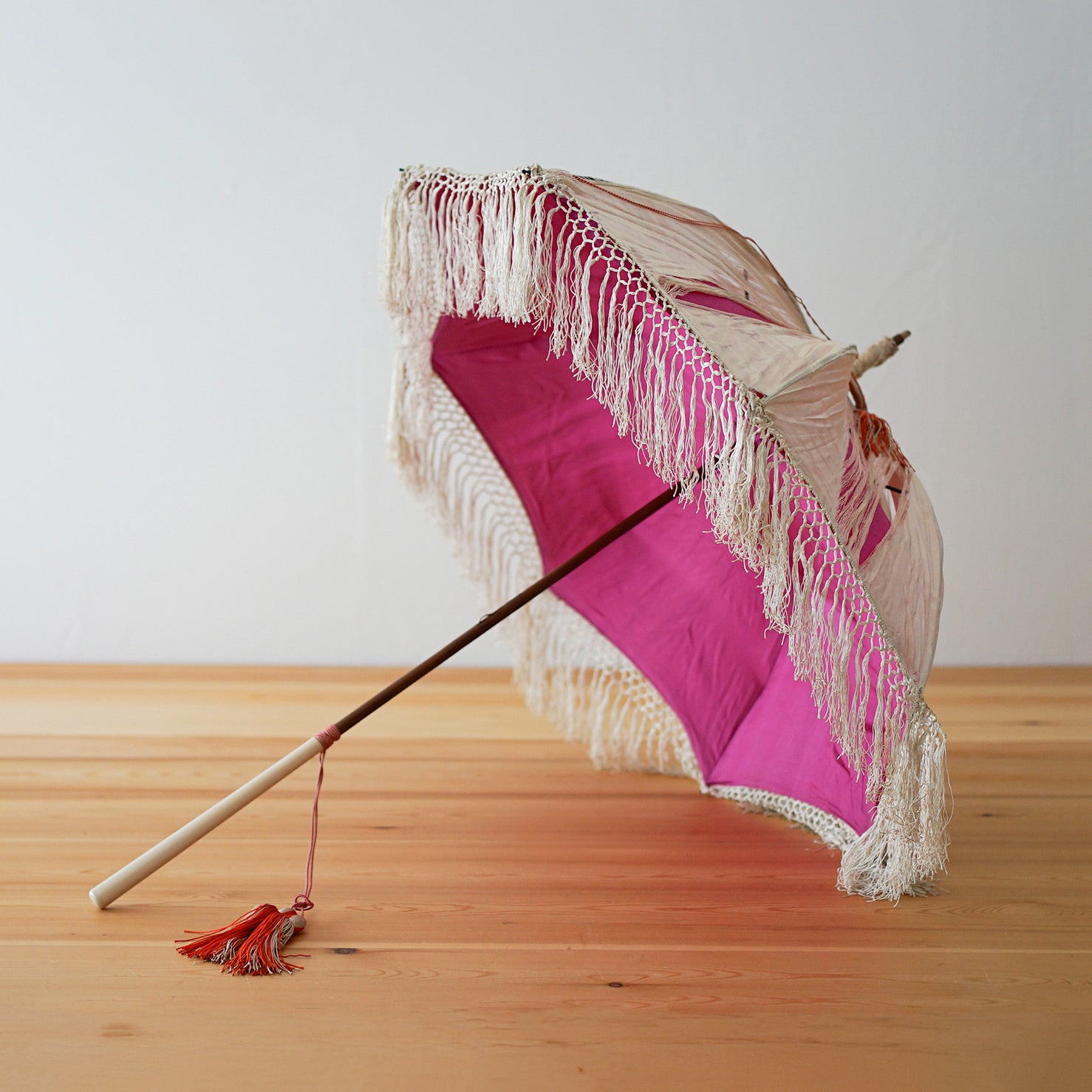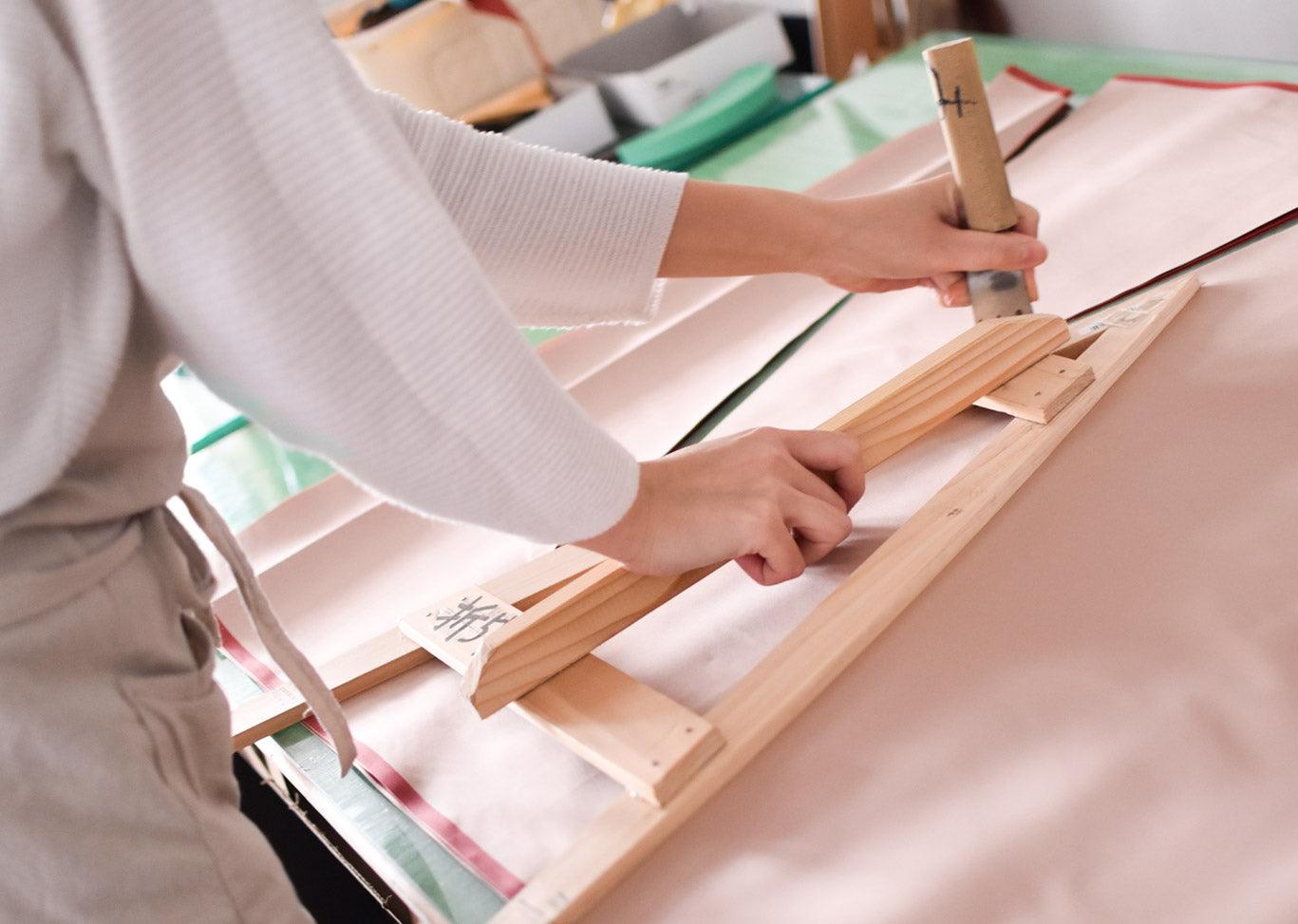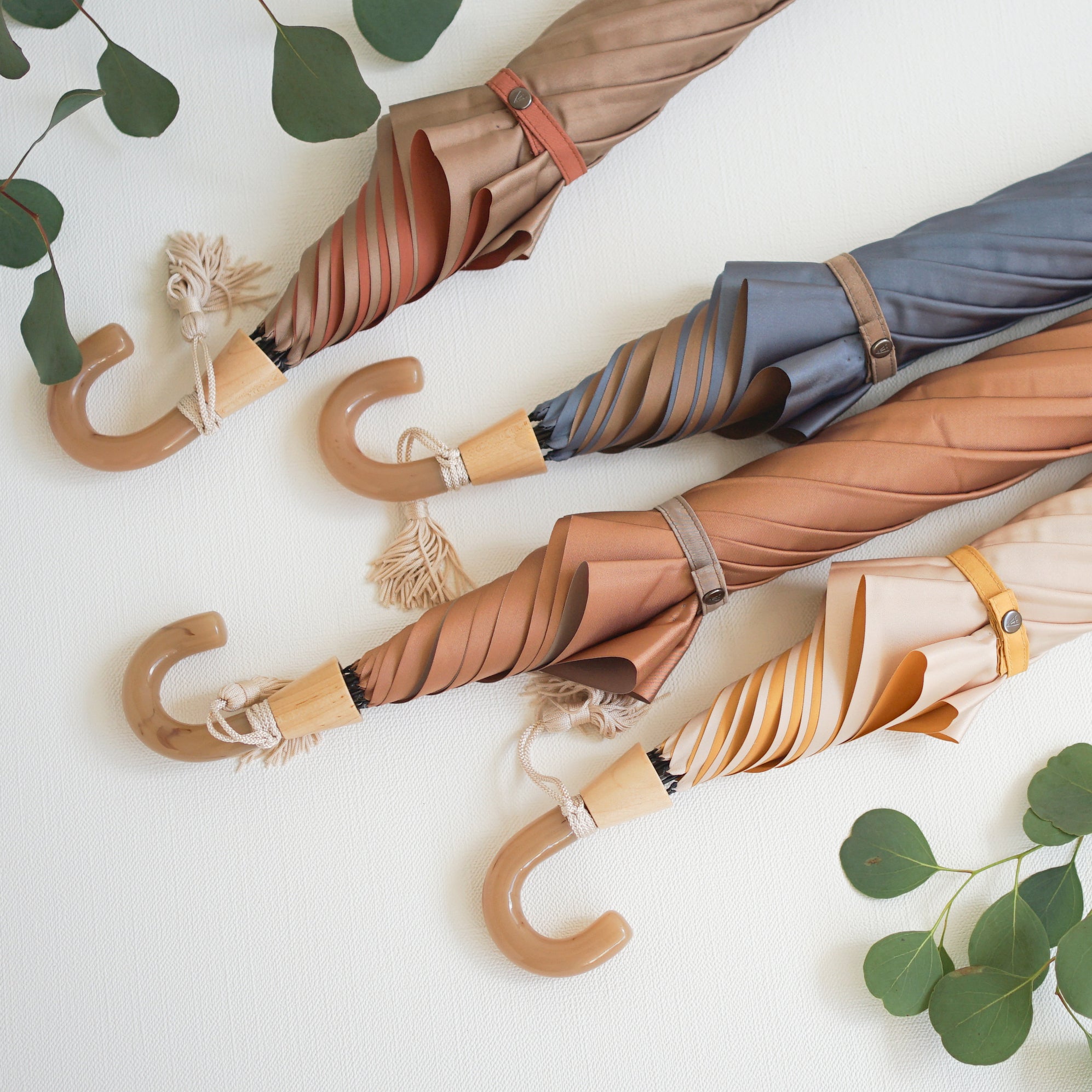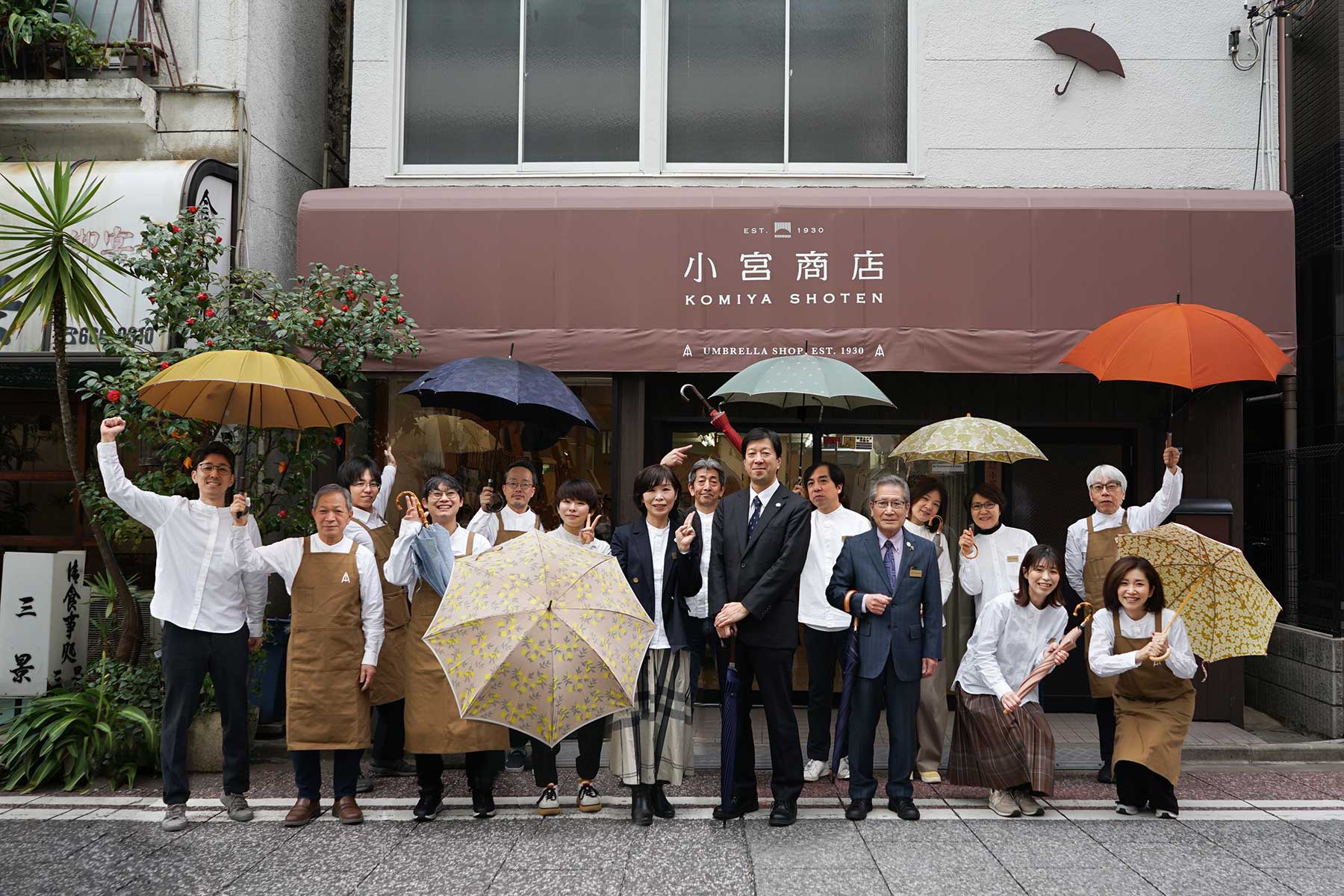A new all-weather umbrella, a collaboration between Komiya Shoten and "kata kata," a husband-and-wife unit consisting of Takeshi Matsunaga and Chie Takai, who create original dyed fabrics using techniques such as stencil dyeing and chusen dyeing, will be released on Thursday, February 22nd.
In conjunction with this, we will begin accepting reservations from Friday, February 9th exclusively at our online shop and Higashi-Nihonbashi shop.

Ahead of the release, we visited kata kata's shop and gallery in a corner of the Kamiyo Danchi shopping arcade to interview them.
Setting by Iedokoro / Movie & Photo by Orita / Photo & text by Tagawa

Warm and inspiring design
Upon stepping into the shop and gallery, which is sure to catch your eye just by passing by, you are greeted by the couple, who exude a peaceful atmosphere, and many of their works.
On this occasion of collaboration, we heard about the creation stories and production methods of various designs, and were shown the notebook in which he writes down design ideas as he comes up with them. We were excited by the many animals and plants that look as if they could come to life at any moment.

Takai smiles as he explains that when he designs, he imagines a story for every experience he has in his daily life, while Matsunaga nods.
The works they create are not only warm but also playful, and just looking at them makes you feel happy.

This time, we were allowed to choose a leaf design, which we then had specially redesigned to fit Komiya Shoten's umbrellas.
We added our own touch to this, and finally "kata kata x Komiya Shoten" became a reality.

Expression method of "katazome"

The two of them normally create works using stencil dyeing and chusen dyeing techniques.
This time, we had the privilege of having Mr. Matsunaga show us how stencil dyeing is done.

First, each carefully carved stencil is placed on the paper and then the dye-resistant paste is spread evenly with a spatula.
Dye-resistant paste is made from glutinous rice flour and rice bran, and its function is to prevent the dye from seeping into the area where it is applied.

Once you have applied the glue, carefully remove the stencil and leave it to dry.
Once it has completely dried, you can then add color to the areas that are not covered with glue.

The color is made by soaking soybeans in water overnight, crushing them finely, straining the bean juice through a cloth, and mixing it thoroughly with pigment.
Apply it to a brush and apply it carefully.

Since the color changes depending on the pigment mixture, it is difficult to achieve the desired color, which requires many years of experience.
To further adjust the intensity, he apparently applies fine layers of paint.

The completed design is then woven using Yamanashi's "hogushiori" technique and made into umbrella fabric.
Hogushiori also begins with creating a stencil, but it is expressed using a method called Nassen, which is different from stencil dyeing and Chusen dyeing.
In textile printing, a mixture of glue and dye is spread with a spatula, and different stencils are used for each color, and the dye is applied in layers.

Furthermore, this is the first time that Komiya Shoten has used cotton thread for the weft, which, combined with the texture of the unraveled weave, gives the umbrella a gentler feel.

katakata Leaf Folding Umbrella for Sunny and Rainy Days
Color: (from left) Tin blue, Moegi, Yellow, Light orange Price: 22,000 yen (tax included)
You can pre-order the finished product here
Through this collaborative project, we were able to learn about the two of them and their thoughts on their everyday manufacturing and design ideas.
Furthermore, by spending a lot of time together, it was a valuable opportunity for their feelings to overlap with those of Komiya Shoten.
Thank you very much, Matsunaga-san and Takai-san, for taking the time to meet with us.

Next time, I will explain in detail how umbrella fabric is woven.
We hope you enjoy the different expressions of each design, which is created using the different techniques of Chusen and Nassen.

(Left) Takeshi Matsunaga, (right) Chie Takai
Takeshi Matsunaga and Tomoe Takai
In 2004, he studied abroad at the Academy of Fine Arts in the Netherlands for a short period, after which he started working as part of the kata-dyeing unit kata kata. Since then, he has exhibited his work both in Japan and overseas, and in recent years has also been working on providing designs to companies.
For more information on kata, click here


